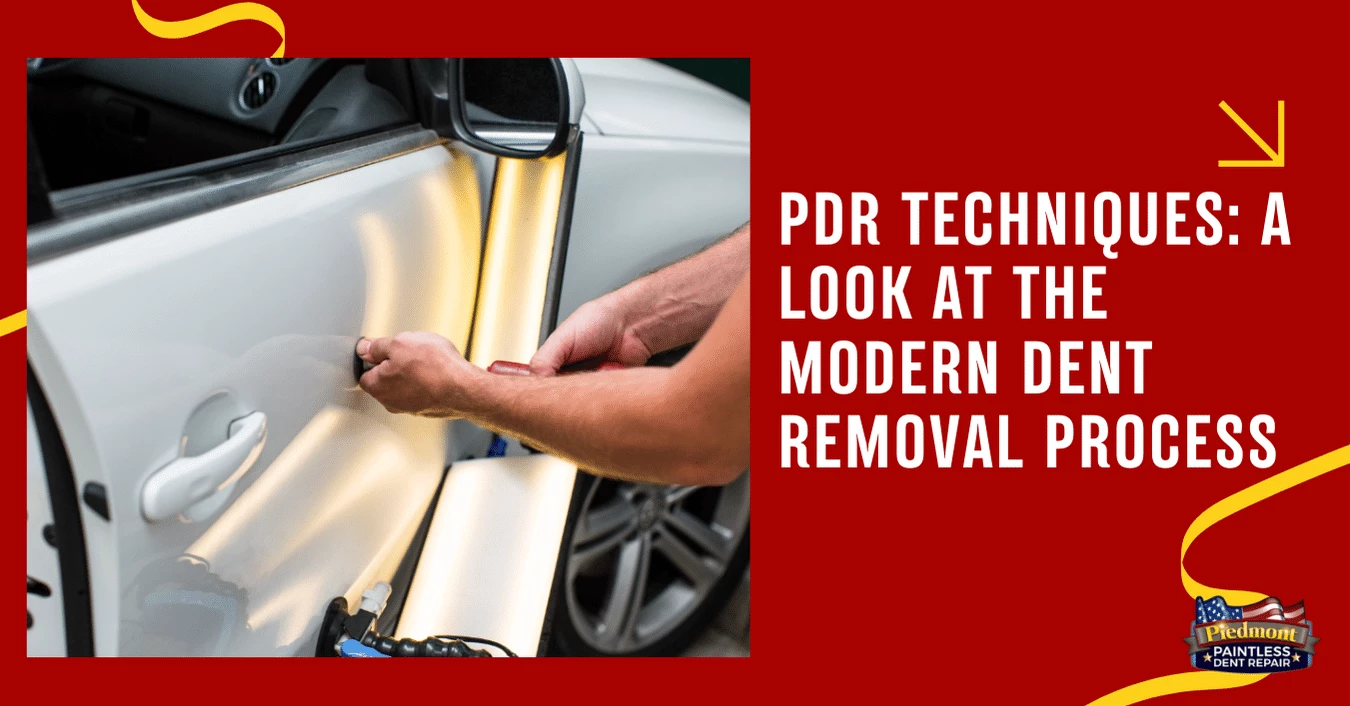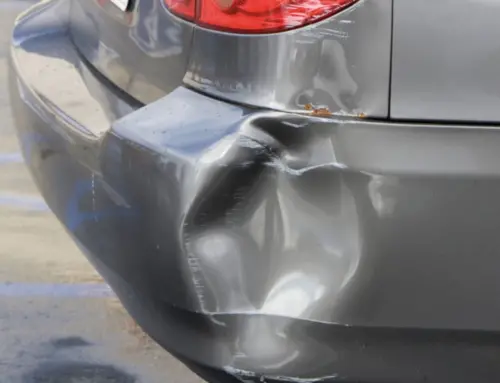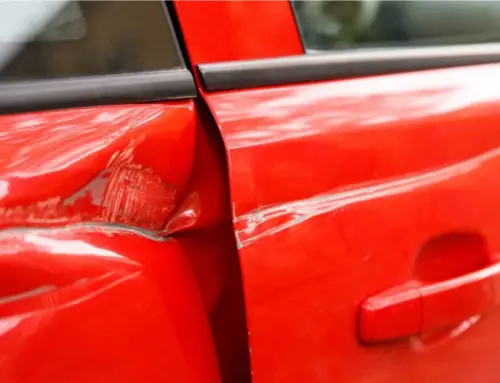Over the last few decades, paintless dent repair (PDR) has revolutionized the way body shops handle small to medium-sized dents and creases in vehicles. Gone are the days where any dent, no matter how minor, automatically meant breaking out the tools to pound out the metal or replace panels.
Most of us think that car dents meant a trip to the body shop for replacement panels or extensive filling and sanding. But this process looked like it could pull out deep dents without any visible evidence afterwards. The truth is, there is more about PDR that you have to know that might shock you.
Read on to learn more!
How do modern PDR techniques work to remove dents from vehicles?
Modern Paintless Dent Repair (PDR) techniques utilize specialized tools and methods to remove dents from vehicles without the need for repainting or extensive bodywork. The process typically involves the following steps:
- Assessment: The technician assesses the size, location, and severity of the dent to determine if it is suitable for PDR.
- Access: Access to the backside of the dent is gained either through existing openings in the vehicle’s body or by removing interior panels.
- Manipulation: Using specialized tools, the technician gently massages and pushes the dent out from the inside, gradually restoring the damaged area to its original shape.
- Finishing Touches: Once the dent is removed, any minor imperfections or high spots are carefully smoothed out to achieve a seamless finish.
- Quality Check: The repaired area is inspected to ensure the dent has been fully removed and the vehicle’s exterior is restored to its pre-damaged condition.
By employing precise techniques and tools, modern PDR methods offer a non-invasive and cost-effective solution for removing dents from vehicles while preserving the original paint finish.
What are the benefits of choosing PDR over traditional dent removal methods?
Choosing Paintless Dent Repair (PDR) over traditional dent removal methods offers several key benefits:
- Preservation of Original Paint: PDR techniques allow dents to be removed without disturbing the vehicle’s original paint finish, preserving its aesthetic appeal and resale value.
- Cost-Effectiveness: PDR is often more cost-effective than traditional dent repair methods, as it requires fewer materials and labor hours, resulting in lower overall repair costs.
- Faster Turnaround Time: PDR typically requires less time to complete compared to traditional dent repair, enabling drivers to get back on the road sooner and minimizing vehicle downtime.
- Non-Invasive Process: PDR is a non-invasive repair method it can be painted, filled, or sanded without damaging the surface, reducing the risk of further damage to the vehicle and maintaining its structural integrity.
- Environmentally Friendly: Since PDR does not involve the use of chemicals or paint, it is an environmentally friendly repair option that reduces the generation of harmful waste materials.
Overall, choosing PDR offers convenience, cost savings, and environmental benefits, making it an attractive option for dent repair.
Are there limitations to PDR techniques when it comes to dent size and location?
While Paintless Dent Repair (PDR) is highly effective for certain types of damage, it does have limitations regarding the size and location of the dents it can repair.
Generally, PDR is most suitable for small to medium-sized dents, where the metal has not been stretched too far beyond its original shape. Larger dents or dents with a sharp crease might not be fully corrected with PDR, as the metal may be too stretched to return to its pre-dent state.
Additionally, dents located near the edge of panels or those that involve damage to the vehicle’s creases are more challenging to repair using PDR techniques.
Furthermore, accessibility is a critical factor in the PDR process. If the back of the dent is not accessible through the vehicle’s design, such as with double-walled panels or tightly braced areas, PDR may not be possible.
Damage that affects the metal’s paintwork, leading to cracks or chips, also falls outside the range of PDR capabilities. Such damage typically necessitates more traditional repair methods that include body filler and repainting.
Vehicle owners should consult with PDR technicians to assess the feasibility of dent repair on a case-by-case basis, considering these constraints on size and location.
What qualifications and training do technicians need to perform effective PDR?
Technicians performing effective Paintless Dent Repair (PDR) require specialized qualifications and training to master the precise techniques involved. Key qualifications and training include:
- Technical Skills: Technicians must possess strong manual dexterity and hand-eye coordination to manipulate the tools effectively and gently massage dents out of vehicle panels without causing further damage.
- Knowledge of Vehicle Anatomy: Understanding the structural composition of vehicles and how different materials respond to manipulation is essential for successful PDR.
- Training Programs: Completion of comprehensive training programs specifically focused on PDR techniques is crucial. These programs may be offered by vocational schools, trade associations, or PDR organizations and typically include hands-on practice and instruction from experienced professionals.
- Certification: Some technicians seek certification from recognized PDR organizations to demonstrate their expertise and commitment to high-quality workmanship.
- Continuing Education: Staying abreast of advancements in PDR technology and techniques through continuing education and professional development ensures technicians maintain their skills and knowledge.
By obtaining these qualifications and training, technicians can perform effective PDR and provide high-quality dent repair services to vehicle owners.
What is the typical cost associated with utilizing modern PDR techniques for dent removal?
The cost for utilizing modern PDR (Paintless Dent Removal) techniques can vary depending on the location, severity of the dent, and the experience of the technician. On average, you can expect to pay anywhere from $75 to $150 per dent. However, larger dents or hail damage may cost more.
Some factors that can affect the cost include:
- Number and size of dents: As mentioned before, larger and more numerous dents will likely cost more to repair compared to smaller singular ones.
- Location of the dent: Dents in easy-to-reach areas such as flat panels will generally cost less than those in hard-to-reach areas like curved panels or near windows.
- Paint damage: If there is any paint damage present along with the dent, it will require additional work and materials to fix it properly.
- Experience of technician: Experienced technicians who have been trained in PDR techniques tend to charge higher prices due to their skills and expertise.
- Location of service: Prices may also vary depending on where you live as labor costs can differ from one region or state to another.
It’s always best to get a few quotes from different PDR shops in your area so you can compare prices and find a quality technician at a fair price. Keep in mind that while price is important, it’s also crucial to choose a reputable and experienced technician for effective results.
Discover PDR: Transform Your Car’s Dents Today!
Unleash your vehicle’s true aesthetic potential with Piedmont Dent Repair’s expert Paintless Dent Repair (PDR) services! By choosing PDR, you’re not only opting for a cost-efficient solution but also preserving the original paintwork, thereby maintaining your vehicle’s value and integrity.
Don’t let dents diminish your car’s appearance; trust Piedmont Dent Repair to deliver superb results that align with the highest standards of quality and customer satisfaction.
Contact us to arrange a consultation and take the first step towards a flawless finish today!






